Heart Surgery Transcript
Heart Surgery – Michael Hakimi, MD Video
Opening screen with title “Innovations in Medicine – Health Television” and swirling graphics.
[Serious music]
Announcer (V.O.): Open heart surgery is something none of us want to experience but there is a new alternative for many patients - implanting a stent in the heart arteries through the wrist, a procedure called transradial approach. Dr. Michael Hakimi reveals how this is done and the benefits for the patient.
V.O. visuals: Surgical team performing operation on patient; two surgeons looking at monitors; close-up of arteries and heart beating; Dr. Hakimi being interviewed in a studio against a gray background with a red light source.
[Music fades out]
Michael Hakimi, MD: So, there are times when the arteries which feed the heart get blocked and that can be either a progression of blockage over time or actually…
V.O visual: Close-up of Hakimi, in a shirt, tie and white coat, with title “Michael Hakimi, MD” in lower-third.
Hakimi (V.O.): …a heart attack where there is a complete blockage of one of the arteries. So in those situations we have to do a heart catheterization. What it entails is going with a small catheter or a plastic tube up towards the heart. You go inside the arteries of the heart and once you get to those arteries, you use an angiogram and an angiogram means where you actually visualize the arteries themselves and by doing so, you can see if there are any blockages or not. If there is a blockage there, usually within the same setting you can usually fix it. That’s usually by opening up that blockage either with a balloon or drill or a laser. And, then once that’s done, there’s a stent to keep that area open. So traditionally what was done was doing all angiograms from the groin. There is a major artery, the femoral artery on both sides of the groin…
V.O. visuals: Hakimi and another health care worker sitting at desk reviewing a heart scan on a computer monitor; view through window of a surgery team at work in a cath lab; close-up of Hakimi pointing at angiogram on monitor; camera zooms in to show several images of angiograms with a blocked artery; motion graphic of a blocked artery with arrows indicating the blockage; motion graphic showing catheter tube running through the blocked area of the artery, followed by a stent device which widens it; surgical team at work pushing a catheter through the femoral artery (images below).
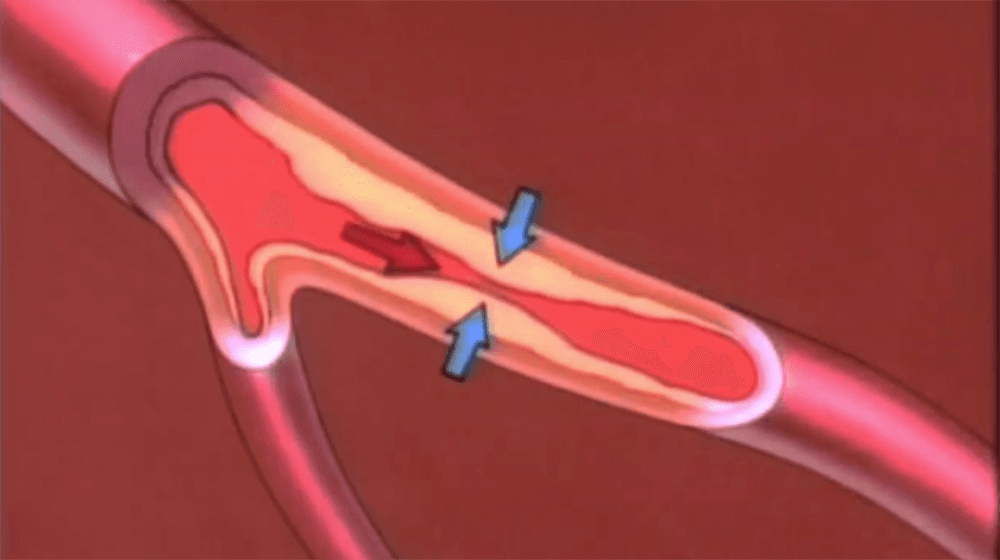
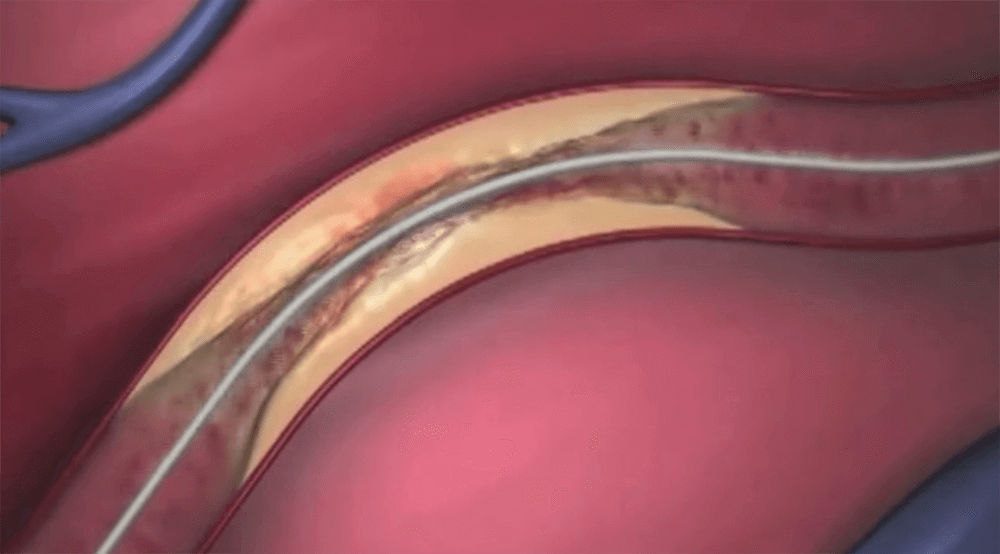
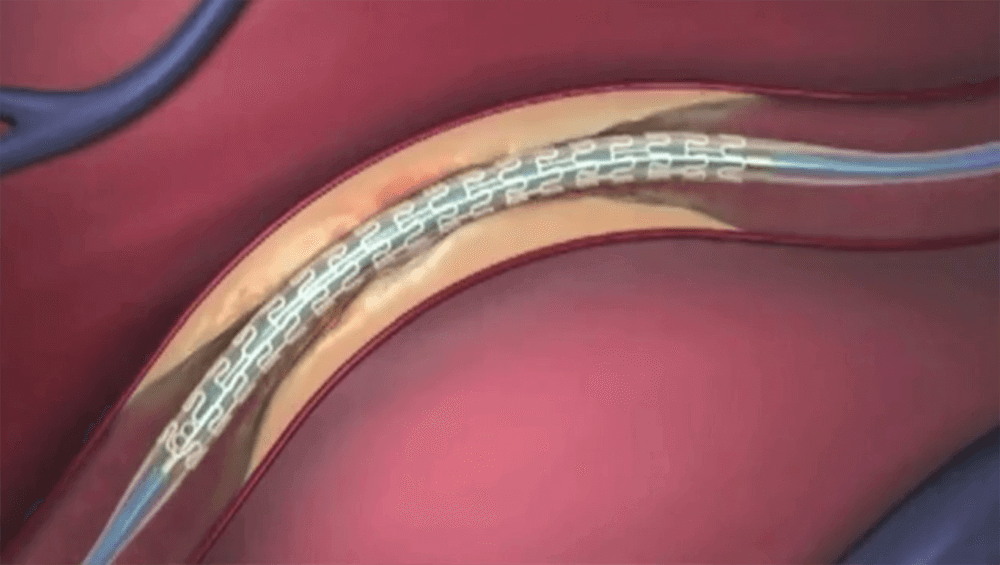
Hakimi: …and that’s how people would go up towards the heart, to engage the heart.
Hakimi (V.O.): Now what’s become more prevalent that’s been going on at least in Europe for a number of years and also in Asia, is entering from the wrist or the radial artery. In that situation what you do is access going up towards the heart…
V.O. visuals: Close-up of surgeon’s hands inserting a catheter into a patient’s wrist; motion graphic of catheter being inserted through the skin and radial artery in the wrist (images below).
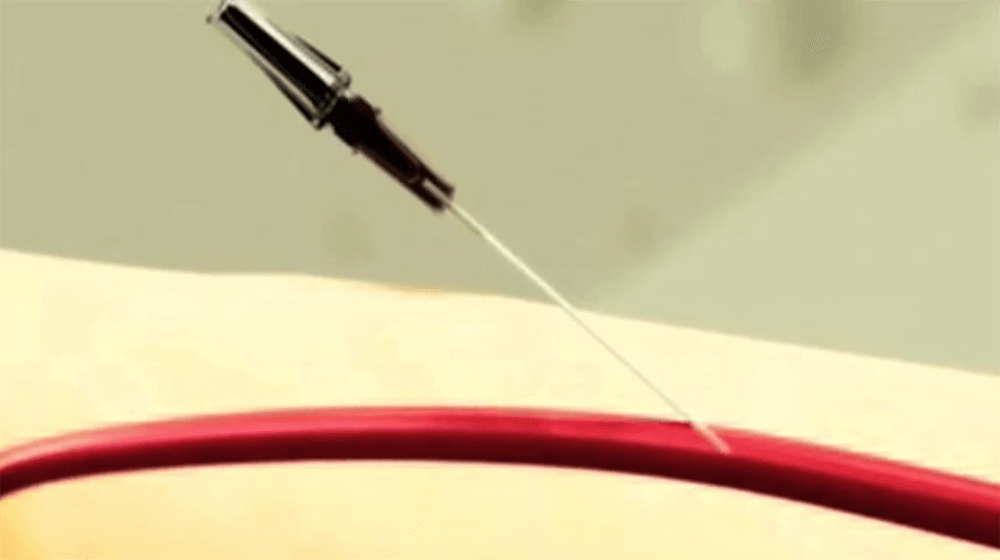
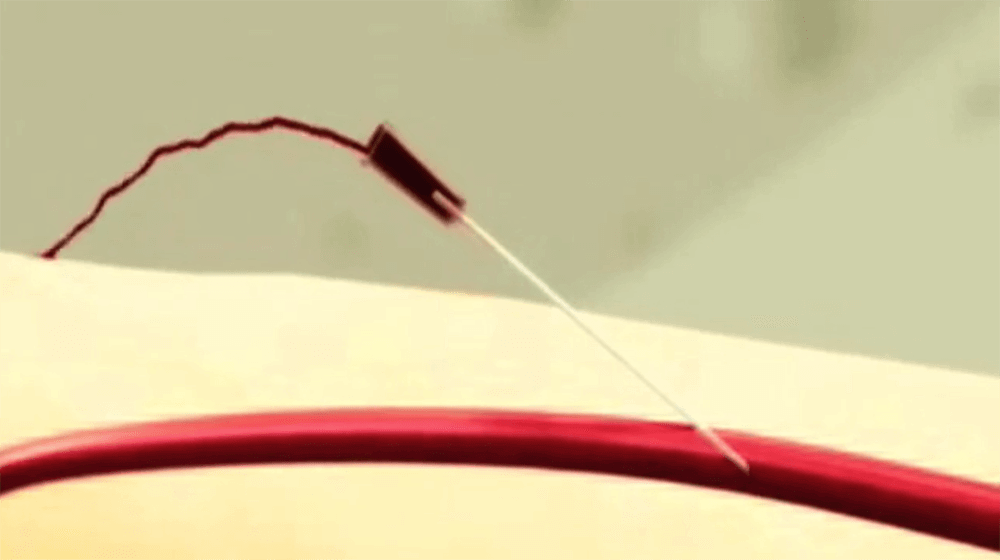
Hakimi: …from the radial artery in the wrist. By doing so, there’s less discomfort for the patient, the risk from complications is much less because it’s a much smaller artery…
Hakimi (V.O.): …and with all that said, improves the outcomes and how the patient feels after the procedure is done.
V.O. visual: Close-up of surgeons hands inserting the catheter through a patient’s skin at the wrist.
Hakimi: It’s actually been shown that patients who are older actually do much better by being done from the wrist. The reason being so is the risk of bleeding is much less. One of the major issues or complications of a catheterization is the issue of bleeding. When it’s done from the wrist…
Hakimi (V.O.): …that risk is almost minimal.
V.O. visual: Motion graphic of stent inside artery with blood flowing through.
Announcer (V.O.): Dr. Hakimi demonstrates how the procedure is performed.
V.O. visual: Motion graphic zooms in closer on stent.
Hakimi: So it’s a metal scaffold, which you can see here, which is now collapsed before we actually place it inside the heart artery. And what this stent does is it keeps that area blockage open. And, just to show how the stent looks after it is deployed and the size of it. This is the stent, how it would look inside the heart artery…
Visual: Dr. Hakimi is holding a thin, looped wire; close-up of end of wire with thin, collapsed mesh stent; close- up of mesh stent expanded to about 1/16 of an inch in diameter after deployment.
Hakimi (V.O.): …after it is deployed to maintain that artery open.
V.O. visual: Close-up graphic of stent inside artery.
Hakimi: So when it comes to procedure, the success of it has to do with the operator, of course, but patients are quite happy with having it done this way and also because the same procedure, which was done previously from the groin, can now be done from the wrist.
Hakimi (V.O.): With that said, this improves patient happiness after the procedure and also too as well…
V.O. visual: Hakimi at monitor reviewing a heart scan; close-up of scan of beating heart
Hakimi: …when the operator feels comfortable and can simply do it well, can have the same success rate as being done from the groin.
Visual: Hakimi being interviewed in the studio.
End screen is black.

